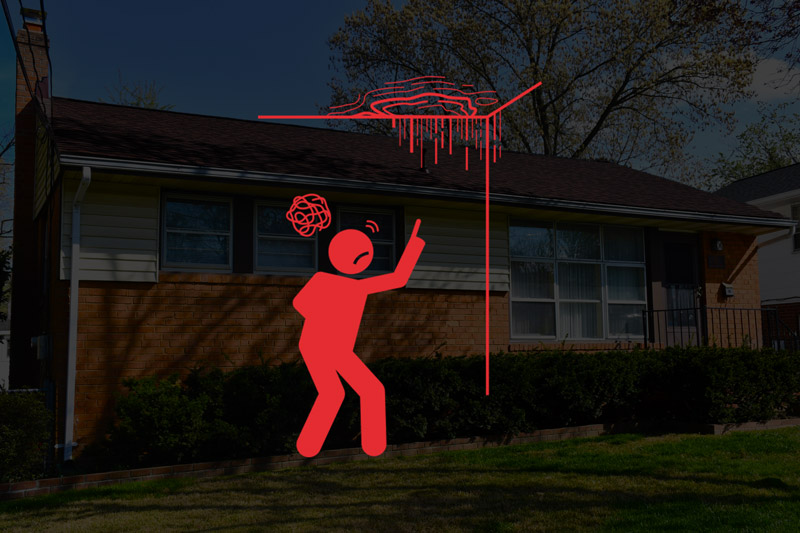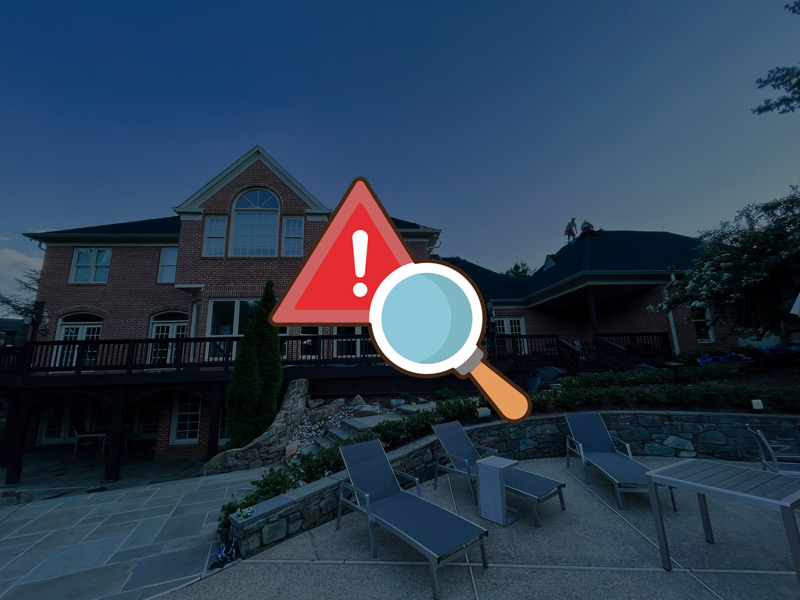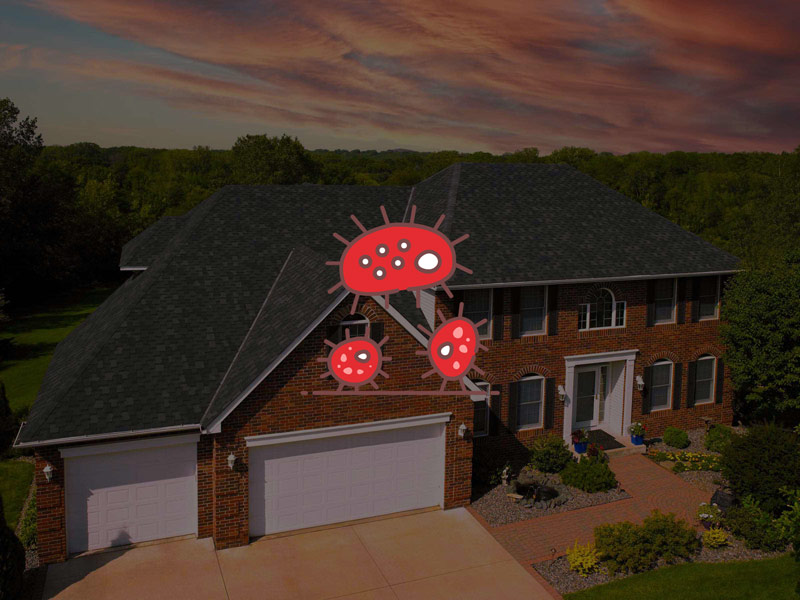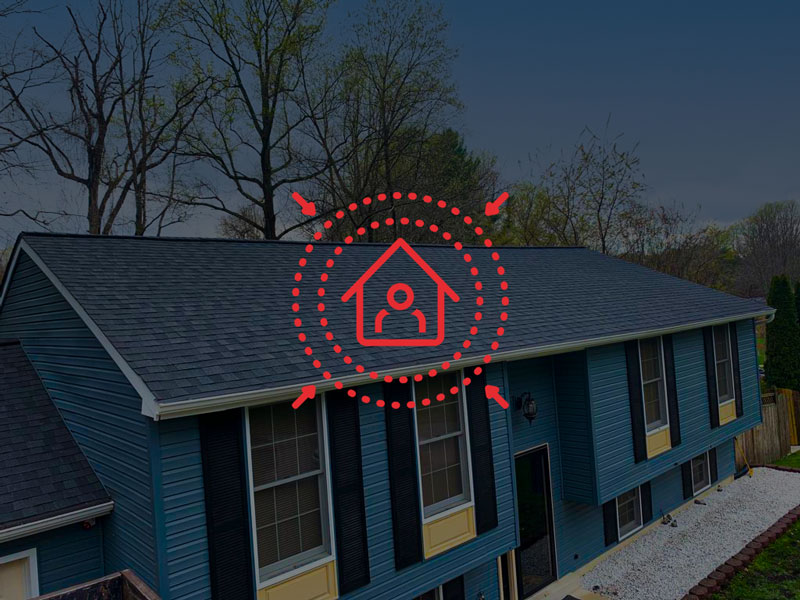How To Remove Roof Moss | Ultimate Guide By RNC
Roof moss, also referred to as roof algae or roof lichen, is a plant-like organism that thrives in damp and shaded areas on the roof surface. It typically appears as greenish patches or clumps, and its growth is facilitated by moisture and lack of sunlight. Roof moss is a non-vascular plant that absorbs water and nutrients through its leaves, anchoring itself to the roof’s surface with root-like structures.

Common Causes of Roof Moss Growth
To effectively address roof moss growth, it’s important to understand its underlying causes. Several factors contribute to the development of roof moss, including:
- Moisture: Excessive moisture accumulation on the roof due to rain, condensation, or inadequate drainage can create a favorable environment for moss growth.
- Shade: Lack of direct sunlight, especially in areas shaded by trees or adjacent structures, allows roof moss to flourish.
- Humidity: High humidity levels, prevalent in certain climates, contribute to the growth and persistence of roof moss.
- Organic Debris: The presence of leaves, twigs, or other organic matter on the roof provides a nutrient-rich substrate for moss to take root.
Identifying Roof Moss: Signs and Symptoms
Detecting roof moss early on can help prevent further damage and facilitate timely removal. Look for the following signs and symptoms:
- Green Patches or Clumps: Moss growth appears as green or greenish-black patches on the roof surface, typically in areas with limited sunlight.
- Fuzzy Texture: Roof moss has a soft, fuzzy texture that distinguishes it from other substances like dirt or debris.
- Raised or Bumpy Surface: As moss grows and spreads, it can cause the shingles or roofing materials to lift or become uneven.
- Moisture Retention: Roof moss retains moisture, resulting in a consistently damp or wet roof surface.

The Dangers of Roof Moss
Structural Damage: Impact on Shingles and Roofing Materials
The presence of roof moss can lead to significant structural damage to your roof. As roof moss spreads and grows, it can penetrate and lift the shingles, compromising their integrity and protective function. This can result in water infiltration, leading to leaks and potential damage to the underlying roof structure. The weight of accumulated roof moss can also strain the roofing materials, causing them to deteriorate more rapidly. Addressing roof moss promptly is crucial to preserve the structural stability of your roof and avoid costly repairs.
Increased Moisture Retention: Potential for Leaks and Rot
One of the primary concerns with roof moss is its ability to retain moisture. Moss acts like a sponge, absorbing and holding water against the roof surface. This prolonged moisture exposure can seep through the shingles, underlayment, and into the roof’s structural components. Over time, the constant moisture can lead to rot, decay, and the growth of mold and mildew. Not only does this compromise the integrity of the roof, but it also poses health risks and can negatively impact indoor air quality. Removing roof moss effectively is crucial to prevent moisture-related issues and maintain a dry and healthy roof environment.
Aesthetic Concerns: Impact on Curb Appeal and Property Value
In addition to the structural and functional consequences, roof moss can also have aesthetic implications for your home. A roof covered in moss can appear unsightly and neglected, diminishing the overall curb appeal of your property. The green patches and clumps can be particularly noticeable, especially against lighter-colored roofs. Moreover, a moss-infested roof can create the perception of poor maintenance and lack of care, potentially affecting the perceived value of your home. By proactively addressing roof moss, you can enhance the visual appeal of your property and maintain its market value.

Effective Methods for Removing Roof Moss
Structural Damage: Impact on Shingles and Roofing Materials
The presence of roof moss can lead to significant structural damage to your roof. As roof moss spreads and grows, it can penetrate and lift the shingles, compromising their integrity and protective function. This can result in water infiltration, leading to leaks and potential damage to the underlying roof structure. The weight of accumulated roof moss can also strain the roofing materials, causing them to deteriorate more rapidly. Addressing roof moss promptly is crucial to preserve the structural stability of your roof and avoid costly repairs.
Increased Moisture Retention: Potential for Leaks and Rot
One of the primary concerns with roof moss is its ability to retain moisture. Moss acts like a sponge, absorbing and holding water against the roof surface. This prolonged moisture exposure can seep through the shingles, underlayment, and into the roof’s structural components. Over time, the constant moisture can lead to rot, decay, and the growth of mold and mildew. Not only does this compromise the integrity of the roof, but it also poses health risks and can negatively impact indoor air quality. Removing roof moss effectively is crucial to prevent moisture-related issues and maintain a dry and healthy roof environment.
Aesthetic Concerns: Impact on Curb Appeal and Property Value
In addition to the structural and functional consequences, roof moss can also have aesthetic implications for your home. A roof covered in moss can appear unsightly and neglected, diminishing the overall curb appeal of your property. The green patches and clumps can be particularly noticeable, especially against lighter-colored roofs. Moreover, a moss-infested roof can create the perception of poor maintenance and lack of care, potentially affecting the perceived value of your home. By proactively addressing roof moss, you can enhance the visual appeal of your property and maintain its market value.

Preventive Measures to Avoid Roof Moss Regrowth
Regular Roof Inspections and Maintenance
Schedule regular inspections to detect and address any early signs of roof moss growth. Clear debris, such as leaves and twigs, from the roof surface to prevent moisture accumulation and moss colonization. Additionally, inspect and repair any damaged or missing shingles promptly to maintain a robust and moss-resistant roof.
Improving Roof Ventilation and Sun Exposure
Proper roof ventilation is vital for preventing moss growth. Ensure that your roof has adequate airflow by installing ridge vents, soffit vents, or attic fans. This helps to maintain a dry environment that discourages moss from thriving. Additionally, trimming tree branches near the roof can promote sunlight exposure and inhibit moss growth.
Trimming Overhanging Tree Branches
Overhanging tree branches provide shade and retain moisture on the roof, creating an ideal environment for moss to grow. Trim back any branches that touch or hang over the roof to minimize shade and improve air circulation. By reducing shade and promoting sunlight exposure, you can deter moss growth and enhance the overall health of your roof.
Installing Zinc or Copper Strips to Inhibit Moss Growth
Zinc and copper are effective in preventing moss growth on roofs. These metals release trace amounts of chemicals when exposed to moisture, inhibiting moss and algae growth. Install zinc or copper strips near the ridge of your roof, as rainwater will disperse the metal particles and discourage moss colonization.
View More Articles
Please Share!











